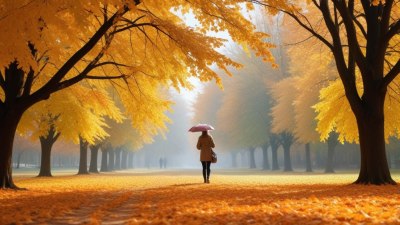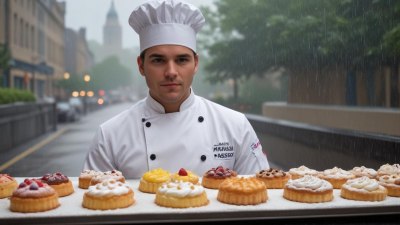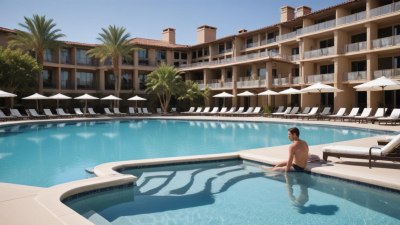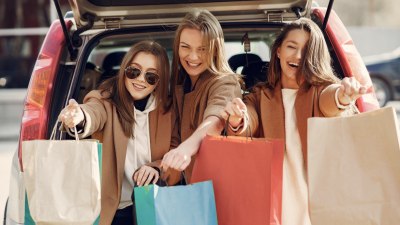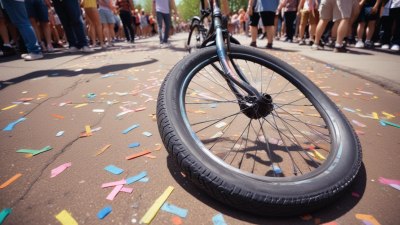Why the Atmosphere Sometimes Looks Like Layers of Cake
Explore the fascinating phenomenon of atmospheric layers resembling cake layers, their causes, and effects.

Image by azerbaijan-stockers on Freepik
The atmosphere is a complex and dynamic system surrounding our planet, composed of various gases that play critical roles in weather patterns, climate, and life itself. On certain days, you might glance up and notice a striking phenomenon: the atmosphere appears to consist of distinct layers, reminiscent of slices in a cake. Understanding these layers not only enhances our appreciation of the sky's beauty but also deepens our grasp of meteorological science.
What Causes the Layered Appearance?
The layered look of the atmosphere can be attributed to several factors, primarily atmospheric stratification, temperature inversions, and the presence of various types of clouds. These elements interact to create visually stunning atmospheric layers that, at times, resemble different cakes stacked upon one another.
Atmospheric Stratification
The Earth's atmosphere is divided into different layers, each characterized by its temperature and composition. These layers include the troposphere, stratosphere, mesosphere, thermosphere, and exosphere. The troposphere, where we live, contains weather phenomena and the majority of atmospheric mass. The temperature gradient between these layers contributes to a stratified appearance, particularly when conditions are right.
Temperature Inversions
One primary cause of the layered look is temperature inversion. Normally, as altitude increases, temperature decreases. However, under certain conditions, a layer of warm air can trap cooler air beneath it, creating a stable atmospheric layer. This phenomenon can lead to distinct bands of color and cloud formations, giving the illusion of cake layers in the sky. For example, during sunset, when the light diffuses through various layers of the atmosphere, we often see vivid colors framed by the cool air and warmer air above.
The Role of Clouds
Clouds are significantly responsible for this visual effect. Different types of clouds form at various altitudes and can aggregate into horizontal layers. For instance, altostratus clouds often cover the sky in a gray, smooth sheet resembling the top layer of a cake, while cumulus clouds might appear as fluffy dollops, creating the impression of frosting. When sunlight passes through these clouds, it can produce stunning effects that mimic the appearance of cake layers.
Types of Clouds and Their Effects
Clouds come in various forms, each presenting a unique visual aspect. Stratus clouds are low, flat layers that cloak the sky, while cirrus clouds are high-altitude wispy strands. Layered appearances often emerge when a mix of these cloud types forms together. Depending on the density and arrangement, their interaction can create a cake-like illusion, especially under specific lighting conditions.
Case Studies and Examples
There are countless instances of the atmosphere showcasing this layered appearance. For example, during a late summer afternoon, you might witness a clear division within the clouds and blue sky, emphasizing the horizontal layering effect. An evening sunset, with lower humidity, often showcases vibrant reds and oranges above dark layers of clouds, enhancing the cake-like feel.
In colder climates during winter, the stratified clouds maintain their horizontal formation, appearing distinctly layered against the stark white snow below, replicating the look of a frosted cake against a cake stand. Each seasonal shift contributes to variations in this atmospheric display.
Scientific Importance of Atmospheric Layers
Understanding why the atmosphere sometimes resembles layers of cake not only satisfies our curiosity but also holds scientific significance. Meteorologists and climate scientists closely examine these phenomena to study weather patterns and predict atmospheric changes. These observations provide insights into how warm and cool air interacts and distributes moisture. The information collected can also help in forecasting severe weather, including storms or fog, which are often signaled by specific patterns forming in the sky.
Implications for Climate Change
As climate changes continue, scientists are beginning to observe shifts in cloud patterns and atmospheric layering that may influence weather behaviors. Increased temperatures can alter the structure of these layers, potentially leading to more extreme weather patterns. By tracking these atmospheric changes, climate scientists gain crucial information to address the impacts of climate change.
The atmospheric layers resembling cake are not just an optical illusion; they are a real and scientifically significant phenomenon that illustrates the complexities of our planet's weather systems. Such displays offer both beauty and insight, reminding us of the intricate balance of natural forces at work. The next time you gaze up at a layered sky, appreciate not only its visual allure but also the myriad scientific principles underlying its formation.

